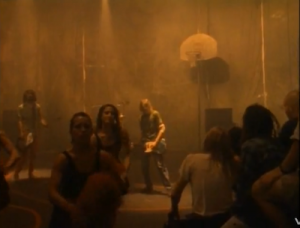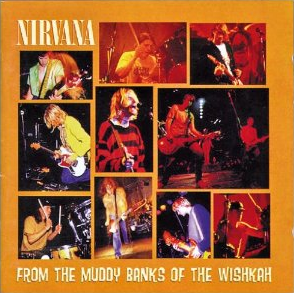
The first time I heard Nirvana’s “Smells Like Teen Spirit,” it was on MTV. My mother had gotten cable to watch The Gulf War (thanks, CNN!) and MTV was part of the package. For any younger readers, MTV used to show music videos almost exclusively back then, before the The Real World proved wildly successful in 1992, and the inevitable tsunami of reality shows crashed with its high-ratings-to-low-production-cost wake.
I remember watching the video and thinking, “Huh, that’s new.” I was interested in all of it immediately: the distorted guitar riff with see-saw lyrics, the clean metallic bass line, the apoplectic yet precise rhythmic drumming (the dude has duct tape on his crashes), the writhing cheerleaders with anarchy symbols emblazoned on their halter-tops, and the old janitor grinning like Sling Blade while he jabbed his bucket. I didn’t know what to make of it, but damned if I didn’t like it.
That video played constantly. By osmosis, it became part of my insulated teenage version of popular culture, but it took several key interactions before I became a fan. I hung out with my cousin who taught me the lyrics to “Lithium,” later learning the lyrics derived from Cobain’s own experience living with evangelical Christians. Then I met some other kids on the bus who liked Nirvana as well, and they also listened to The Misfits and Operation Ivy, so it was pretty much downhill from there. Like many kids, Nirvana was my gateway to other less mainstream or counter-culture artists. The band seemed to redraw all the lines on the music map, helping to usher in the category of “alternative” that reclassified subsequent music (and to an extent, the music that led up to it).
It seems both corny and crass to even mention Kurt Cobain these days. His life and work has either been deified beyond reason, or scornfully dismissed out of punk contempt. It seems haughty and academic to point out his similarities to other reluctant celebrities (like Bob Dylan) or to attempt to make broad statements about the implications of his untimely death.

The fact remains that the guy (and the band) wrote some of the best tunes of the nineties. From where I was sitting, he was the closest thing to an uncompromising artist that I had ever seen up until that point. So on that somber note, here are some locations from Kurt Cobain’s time in Aberdeen, WA. Hope you try the route of respectful acknowledgement, because it’s the best thing we have left…
